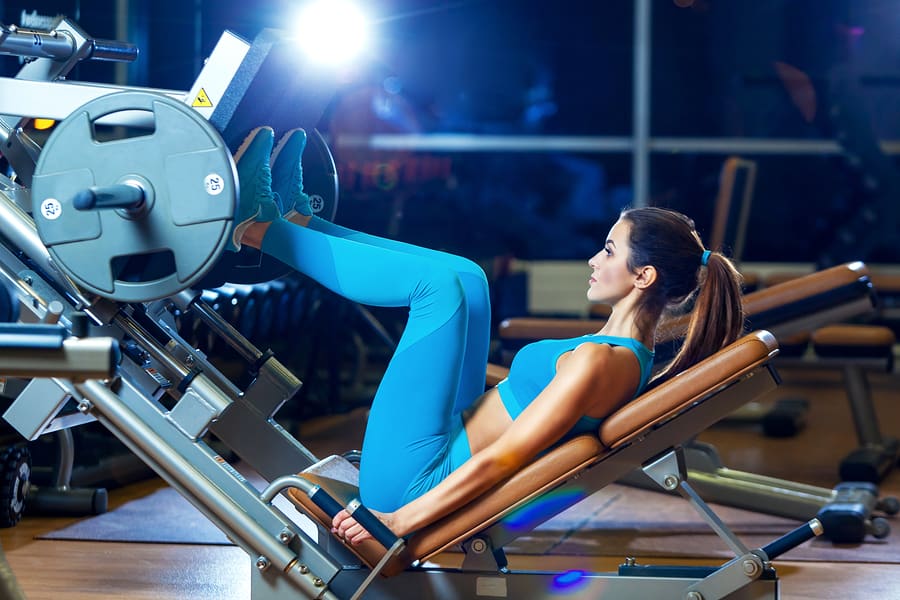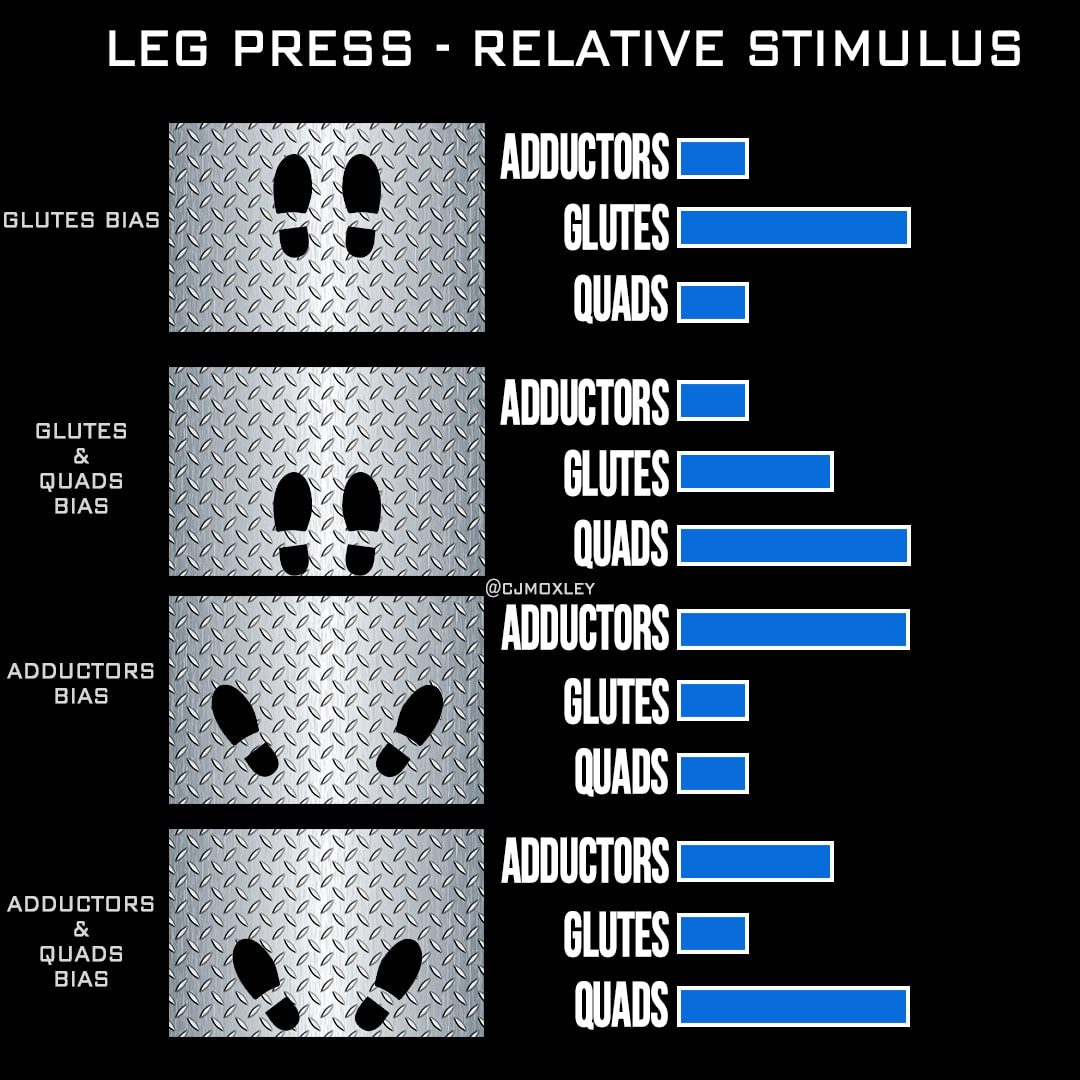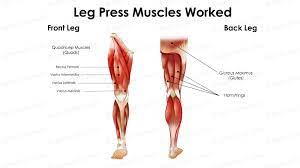
What is a leg press?
If you are relatively new to bodybuilding, You may have heard of the leg press. But, what is a leg press? How do I do a leg press and what are the advantages of using the leg press?
A leg press is a resistance exercise that targets the quadriceps and hamstrings in the upper legs. It is performed on a dedicated leg press machine in a gym. This can be a seated leg press, a 45-degree leg press or a vertical leg press. The leg press is one of the best compound exercises for developing mass and strength in the legs.
Which muscles are worked with a leg press?
The leg press can be classed as a compound exercise as it activates all four muscles in the quadriceps, the hamstring muscles and, to a slightly lesser extent, the gluteal muscles. The core and calf muscles take a strain as stabilising muscles but the target area is the upper leg.
It is possible to put extra tension on particular portions of the upper leg by changing your foot position and angle on a leg press machine plate.

As you can see from this diagram. Placing the feet lower on the footplate will put more resistance through the quadriceps. The narrower you go with a low stance, the more emphasis is placed on the outer quads allowing you to develop width in the upper legs.
A high stance will target the hamstrings and glutes over the quadriceps. Make sure your feet are fully connected with the plate but push through the heels for better hamstring engagement.
Finally, you can bring your adductors in to play if you want to develop your inner thighs by opting for a very wide stance.
How do I do a leg press?
Seated leg press.
The seated leg press machine is common in the majority of commercial gyms. It provides a comfortable and convenient way to perform the press as well as being simple to use. Seated leg press machines are usually cabled with a weight stack meaning that you do not need to load or unload weight plates. This makes it ideal for drop sets or pyramiding up to working sets.
- Adjust your seat and select your weight from the stack. Start light and pyramid up to your working sets.
- Sit on the machine and plant your feet on the footplate. A neutral stance is with feet about shoulder-width apart and pointing slightly outwards. See the description above for alternative stances.
- Slide the seat down so your legs are bent at about 90 degrees. This is your starting position.
- Take a deep breath, upon exhale, push through your heels to slide the seat backwards.
- Go back until your legs are nearly fully extended but stop just short.
- Keeping the leg slightly bent at the top of the movement keeps tension on the target muscle.
- Slowly bend the legs again allowing the seat to slide back down. Keep a grip on the handles at all times and make sure that you stay planted on the seat.
Seated leg press machines are great for performing single-leg presses and calf presses. The single-leg press is performed in exactly the same way as a normal leg press but with one foot off of the plate. Obviously, you will need to reduce the weight but this method really allows you to connect with the target muscle.
If calf presses are part of your leg routine, superset them with leg presses on a seated leg press. Simply slide the seat right back so that your legs are slightly bent, place the balls of your feet on the bottom of the plate and calf press away.
The only negative factor with the seated press is that it is fairly restrictive in terms of resistance. This is not an issue if you are a beginner but advanced lifters can usually press the full weight stack with relative ease. It can also be trickier to press a heavy load on the seated press as it is harder to keep your body planted to the seat. The pushing motion tries to ride your body up the backrest so you really need to grip the handles and push through the heels.
How do I do a 45-degree leg press?
The 45-degree leg press is a step up from a seated press and is great if you are an experienced lifter that needs more resistance with a wider range of motion. It is a plate loaded machine so you can potentially press over a ton of resistance if you're capable.
The angled seat means that you have much more stability and do not have to worry about sliding up the backrest when pressing heavy. There is also the benefit of being able to let the footplate come much closer to the body. This allows for a wider range of motion throughout the exercise.
- Make sure the footplate is on the safety hinges before you start loading it
- Add your weight plates to the bars. Start light and pyramid up to working sets.
- Sit on the pad, lean back and place your feet on the footplate.
- Extend the leg so that you are taking the strain of weight and release the safety hooks. This is usually a handle on each side that flips outwards.
- Lower the footplate in a slow, controlled motion whilst breathing in.
- When the plate is all the way down, breathe out and press it upwards, through the heels, in an explosive movement.
- Try not to let the legs fully extend to keep the quads under tension. Repeat for the required number of reps and sets.
- After the final rep, press the footplate up, flip over the safety hooks and lower it back down slightly to rest on them.
All angled leg press machines will have a safety stop feature that will stop you from being crushed if your foot slips or you lift too heavy. Make sure that you adjust this before you start. Don't set it too high as you want to be able to stretch your quads at the bottom of the movement but make sure it is high enough to keep you safe in case of an accident.
As with the seated press, this machine is also great for calf presses. Most lifters can calf press as much as they can leg press so using supersets will save you time in the gym.
How do I do a Smith machine leg press?

Vertical leg press machines are a rare sight in modern gyms but the exercise can be performed on a smith machine. The movement is exactly the same as an angled or seated press and the same muscles are activated so it is a great alternative if your gym does not have a leg press machine.



